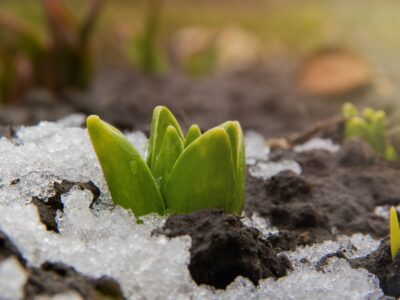Getting Rid of the Guesswork When It Comes to Watering
There's an issue with houseplants. They depend on human
carers for water, light, nutrition, and pest control, in short, everything they
require to live. However, because people are unpredictable, determining how so
much water to feed your plant anywhere at one moment can be challenging.
Overwatering is, in fact, the major cause of houseplant death.
Planters that are sub-irrigated or self-watering take the
guesswork out of watering by enabling plants to hydrate themselves.
Tropicals that have evolved to the low light underbrush of
wooded regions near the equator make up the majority of houseplants. Because
the climate in tropical areas is more constant than it is elsewhere on the
planet, plants that we’ve come to term as “indoor plants” generally have one
thing in common: they don’t like change.
Getting Rid of Inconsistency = Happy Plants
Consistently caring for plants is arduous job. If you're not
utilising a grow lamp solely, you won't be able to manage how much light they
get, therefore their water requirements will fluctuate. Two glasses of water
one week may be excessive or insufficient the next. And this is the crux of the
issue with houseplants. They want for the one thing that most of their
caretakers can't provide them: constancy. We become occupied and forget to
water for a week, then rectify by giving the plant a "extra drink"
the following week. The soil is still very moist a week later, and we have
underwatering, so we reserve water for another week, and a negative cycle
begins. By enabling the plant to drink from a pool as needed, self-watering
planters avoid inconsistencies in watering. It also keeps the soil wet for a
longer amount of time within the container.
Understanding Sub-irrigation
Sub-irrigation is a technique for watering plants from below
rather than above. Our self-watering planters use this method with a patent -
protected sub-irrigation insert that allows soil to sustain moisture level at
the base of the pot while allowing thirsty plants (like the Ficus family) to
grow through the insert and directly into the reservoir for continuous access
to water and nutrient - rich.
Looking to nature can help you grasp the entire process. When
it rains, the soil absorbs the rainwater and gravitation takes it to the lower
tiers of the soil, where it is absorbed by clay and stone subsurface layers. When
the top layers of soil dries out, the plant's deeper tree roots may still take
water from the subsoil's water stores when needed. Plants may survive droughts
thanks to the water held in the subsoil, as the roots still have access to
clean drinking water. Typical indoor planters do not take use of this natural
system, forcing the plant to depend on top waterings when a person judges the
plant to be thirsty.
Sub-irrigation is used in self-watering planters to send water straight to plant roots, eliminating the need for guesswork. With an empty water reservoir at the bottom of the planter, the plant may drink at its own speed and carers can see when it's time to water.
The Scientific Method
The physics behind why self-watering planters and sub
irrigation operate boils down to some fundamental botany. Plants absorb water
by osmosis and use capillary action and water potential differences to
transport it throughout the plant. The term for this entire process is
transpiration. When roots aren't in contact with water on a regular basis, they
can't properly pull enough water to keep plants stiff, which is why your peace
lily may droop if it becomes too dry. Many environmental conditions influence
how quickly or slowly a plant transpires and uses water, as any experienced
plant parent can tell you (light, heat, humidity are just a few).
Sub-irrigation is the simplest technique to ensuring plants have enough water
since the reservoir enables them to digest water as needed. The plant will
require less water on darker, wetter days than on hot, dry days. The plant
doesn't need to depend on a human caregiver to make gradual changes in watering
to compensate for changing environmental circumstances because it has access to
the reservoir.
Is it true that every plant desires a self-watering pot?
In our experience, the majority of the time, yes. To manage
the rate of transpiration, the great majority of tropical plant species demand
regular amounts of moisture in the soil and access to a water reservoir. Even
plants with thin root systems, such as cactus and succulents, may thrive in our
self-watering planter if they are given enough light. Even in arid
environments, our innovative insert in conjunction with aeration stones
provides great root aeration while also pulling water up into the bottom soil
layer, simulating natural environmental conditions.






